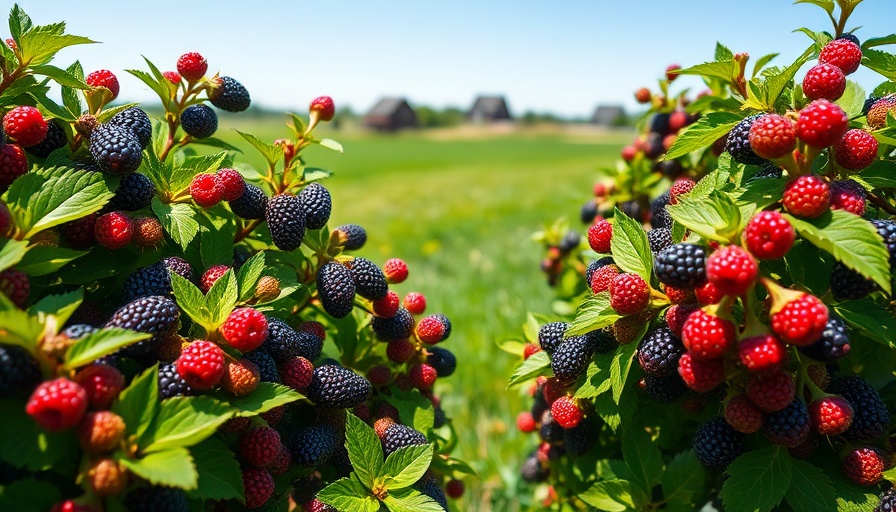
Master the Art of Pruning Blackberries for a Bountiful Harvest
If you're looking to transform your garden into a fruitful sanctuary, knowing how and when to prune blackberry bushes is crucial. Pruning isn't just a chore; it is an essential practice that enhances the health of your blackberry plants and boosts their yield every season. Understanding the life cycle of your blackberry canes—primocanes and floricanes—is key to mastering this technique. By effectively managing these two types of canes, you can enjoy a rich harvest year after year.
Understanding Primocanes and Floricanes
Blackberry bushes, while perennials, have a unique biennial growth cycle where individual canes live for two years. Primocanes are the vigorous first-year shoots that develop the green foliage and buds, whereas floricanes are the older, woody canes that bloom in spring and bear fruit by midsummer. When you prune correctly, you ensure that each cane gets the care it needs to thrive, which is instrumental for a successful gardening experience.
The Importance of Spring Pruning
Springtime is the ideal moment for primocane pruning. As the winter chill recedes, it's time to thin out the first-year canes to maintain a healthy plant structure. Aim to leave around four to six robust primocanes per plant. Snip off any poorly formed or diseased canes, as this promotes new, vigorous growth. Remember to cut the tips off your primocanes around two feet high when they reach a few feet tall. This encourages branching, leading to a more fruitful yield in the following season.
Fall Pruning for Stronger Floricanes
After the harvest, it’s time to prepare your blackberry bushes for the coming cycle by focusing on late summer or fall pruning of floricanes. As these two-year-old canes have fulfilled their purpose, removing them clears the way for new primocane growth in the spring. Effective cleaning also prevents overcrowding, helping younger canes reach their full potential without competition.
Gardening Hacks for Blackberry Bushes
Utilizing proven strategies can dramatically improve your blackberry production. Apart from regular pruning, consider investing in best garden fertilizers and pest-resistant plants to support your garden's ecosystem. Organic compost can enrich your soil, fostering a robust environment for your plants. Furthermore, techniques such as mulching can help retain moisture and suppress weeds, thereby reducing stress on your blackberry plants.
Seasonal Care Beyond Pruning
Pruning is merely a piece of the blackberry care puzzle. Mind the watering needs, especially during dry spells, and employ climate-friendly gardening practices to encourage biodiversity and resilience in your plot. Pay attention to pests and diseases by observing your plants regularly and addressing any concerns promptly with organic remedies.
Celebrating the Harvest
The hard work of pruning and caring for your blackberries pays off in droves when the fruits are ready for picking. Harvesting fresh blackberries is not only satisfying but can also lead to delicious jams, desserts, and healthy snacks that reflect the joys of home gardening. As you experiment with ways to enjoy your bounty, share those recipes and experiences with your community to inspire others to join the sustainable gardening movement.
Conclusion
By embracing the pruning process and understanding your blackberry plants better, you're not just caring for your garden; you’re nurturing a connection to food and the earth. Ready to cultivate your own food? Grab those scissors, roll up your sleeves, and dive into the enriching world of home gardening. Your blackberry bushes are waiting!
 Add Row
Add Row  Add
Add 




 Add Row
Add Row  Add
Add 

Write A Comment